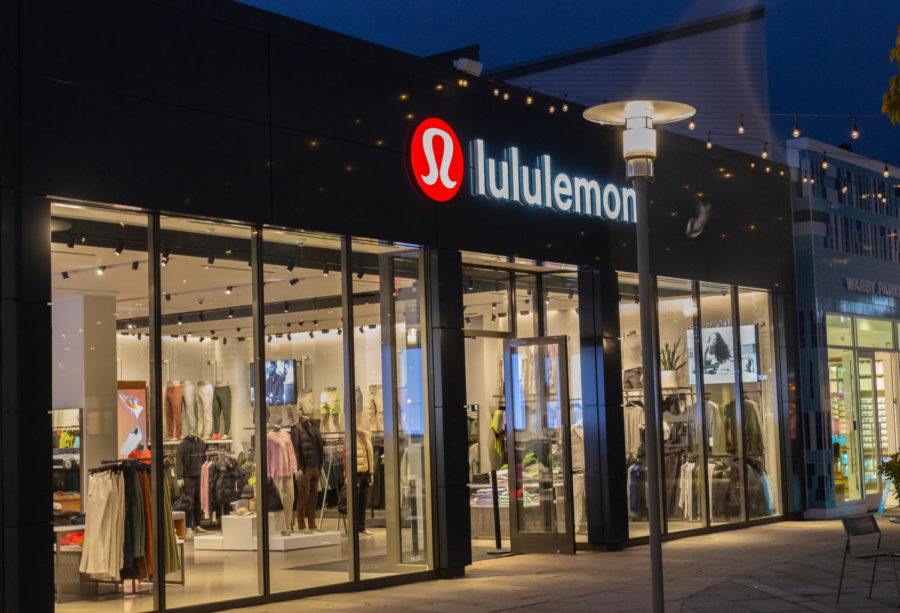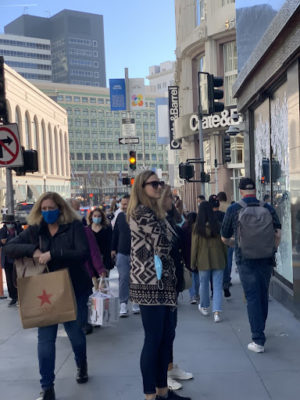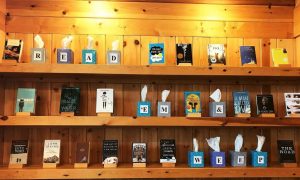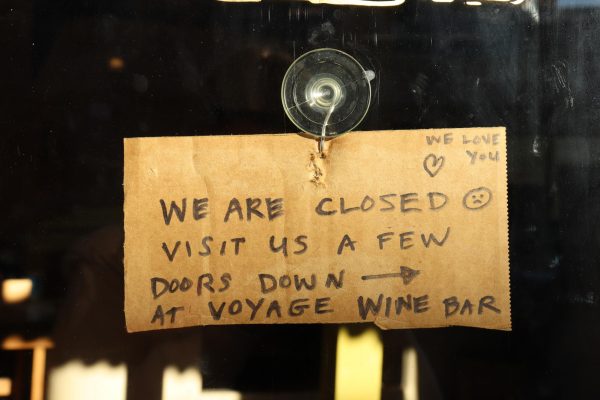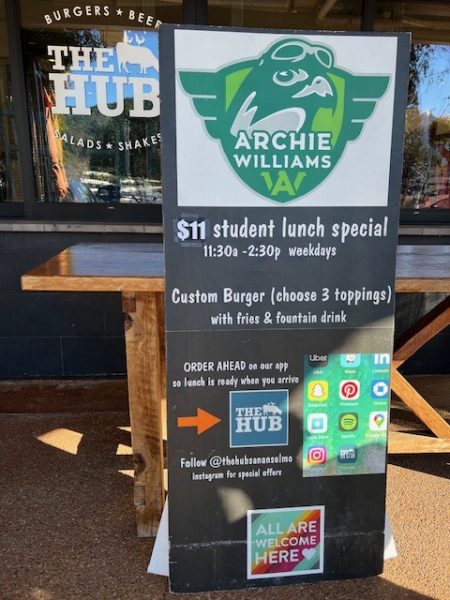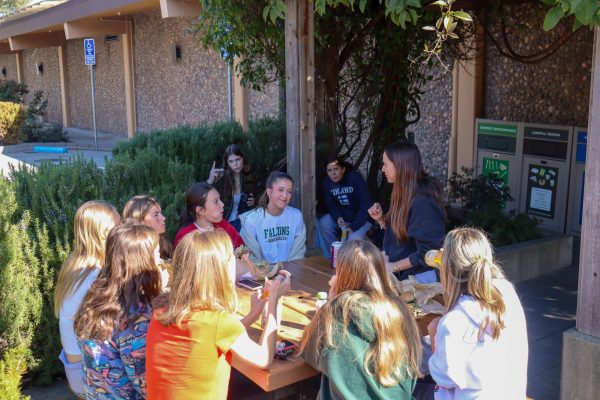When is enough enough? Exploring the need to constantly buy more
The front sign of Lululemon, a high end brand. The company’s has a store at The Village at Corte Madera.
Material objects have always been a way for teenagers to express themselves. But in recent years social media has upped the stakes. In affluent Marin County, youth feel the pressure to have the latest and greatest.
According to a July 2022 article in the US News & World Report, Marin is the eighth wealthiest county in the U.S. Brands like Lululemon and Apple are the norm, setting a high standard for high schoolers to reach.
“Living in Marin makes me question my own socio-economic status,” said junior Zoe Dombrosky. “There is such immense wealth in this community that it makes me believe what I have isn’t enough. I feel self-conscious around others who I know are wealthier than me, even though my family and I are perfectly comfortable.”
The amount of wealth in Marin County is not typical among other communities across the U.S. Many residents live in spacious homes and have the ability to make frequent, pricey purchases.
“I used to not like people to come over during middle school…I was so scared of being judged because everybody has such big houses,” said sophomore Linnea Nowlen.
Throughout all aspects of life, there are hierarchies. Teenagers, in particular, tend to be very “status-conscious,” acquiring certain items is a way of climbing the social ladder. The constant longing to obtain more can get in the way of other aspects of life.
‘[Advertisements] convince me that I need something…It’s so ridiculous and honestly exhausting because I get blinded and lose sight of the important things, like my school work, relationships, and personal well-being,” Zoe said.
Although judgments may not be verbally expressed, many students still worry that others’ perceptions of them are affected by whether or not they have the hottest new gizmo on the market. The pressure may appear subtle but it’s still there.
“I’ve got kind of an old phone but I feel like nobody else has an old phone anymore,” Linnea said.
It’s not just students who are affected by the status driven culture that is so prevalent in Marin. English teacher Diana Goldberg worked at a school in Hayward, in the East Bay, before switching to Archie Williams three years ago, and sees a stark contrast.
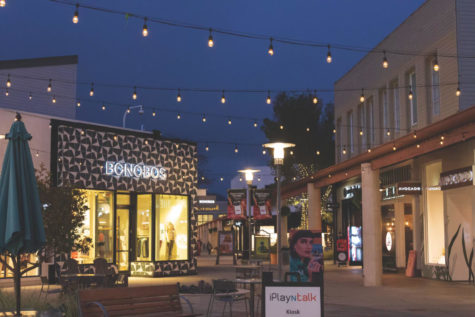
“[In Marin] I see access to cars and criticism over what kind of car people drive. I even had students criticize my own hybrid car when I first started teaching here,” Goldberg said.
Teenagers are at a vulnerable and formative stage in their life. Not only are their brains still developing, but they’re still figuring out who they are. Most teenagers long to fit in, and for many, possessing certain items is just the way to do it.
A CNN health article from 2022 determined that a hallmark of the teenage years is individuation, as they are exploring outside of their familial circle and learning who they are as an individual member of the world.
Social media has made the search for individuality harder than ever before. With easy access to platforms like Instagram and TikTok, youth are constantly seeing not just what their peers have, but also people all over the world. These disconnected influencers live in various circumstances from location to wealth. And when one scrolls through any commercial site, companies can track what they click on and use it to formulate advertisements in an effort to spike viewers’ interest.
“I am more drawn to acquiring stuff now because I am exposed to more media which affects what I do and don’t want,” said sophomore Sam Williams.
Believed to be among the highest causes of materialistic mindsets is social media. Ready access to social media platforms makes them that much harder to resist – all it takes is one click and suddenly the user is sucked into a constant feed of information. This is especially true for young adults whose brains and bodies are still developing.
Decades of research show that the more people rely on acquiring possessions, the less happy they are. Researchers at the University of Texas found that life experiences are more satisfying and lead to greater happiness than consuming material goods. Additionally, an article published by the Greater Good Magazine at UC Berkeley stated that the more materialistic people are, the less satisfied they are with their lives as a whole and with the amount of enjoyment they get from day-to-day life. Other researchers at UC Berkeley’s Greater Good Science Center have also discovered that gratitude for what one already has offers more satisfaction than the need to constantly acquire something new.
Ultimately humans are not defined by their belongings. While many young residents in Marin place value on materialistic items, this outlook on life is not universal. People who are generally at peace with what they already have, instead of wanting to acquire more and more stuff, tend to be much happier. Some students at Archie Williams have already discovered this.
“Quality time with my friends or with my family [is what truly makes me happy],” Linnea said.
Other students, such as Zoe, are able to break materialistic patterns and recognize other (free) activities which bring them joy.
“My hobbies, friends, and family make me happy. It’s just so wonderful to spend time around the things that you love, for me that would be acting, art, music, nature, and the people I’m close to,” Zoe said.
Isa is in 10th grade and her first year of journalism. She joined this class because she loves writing and she wanted to get the experience of working...

Maddie is a senior, in her second year of journalism. You can often find her at Stapleton dancing ballet, as she has been since she was three. Her favorite...


